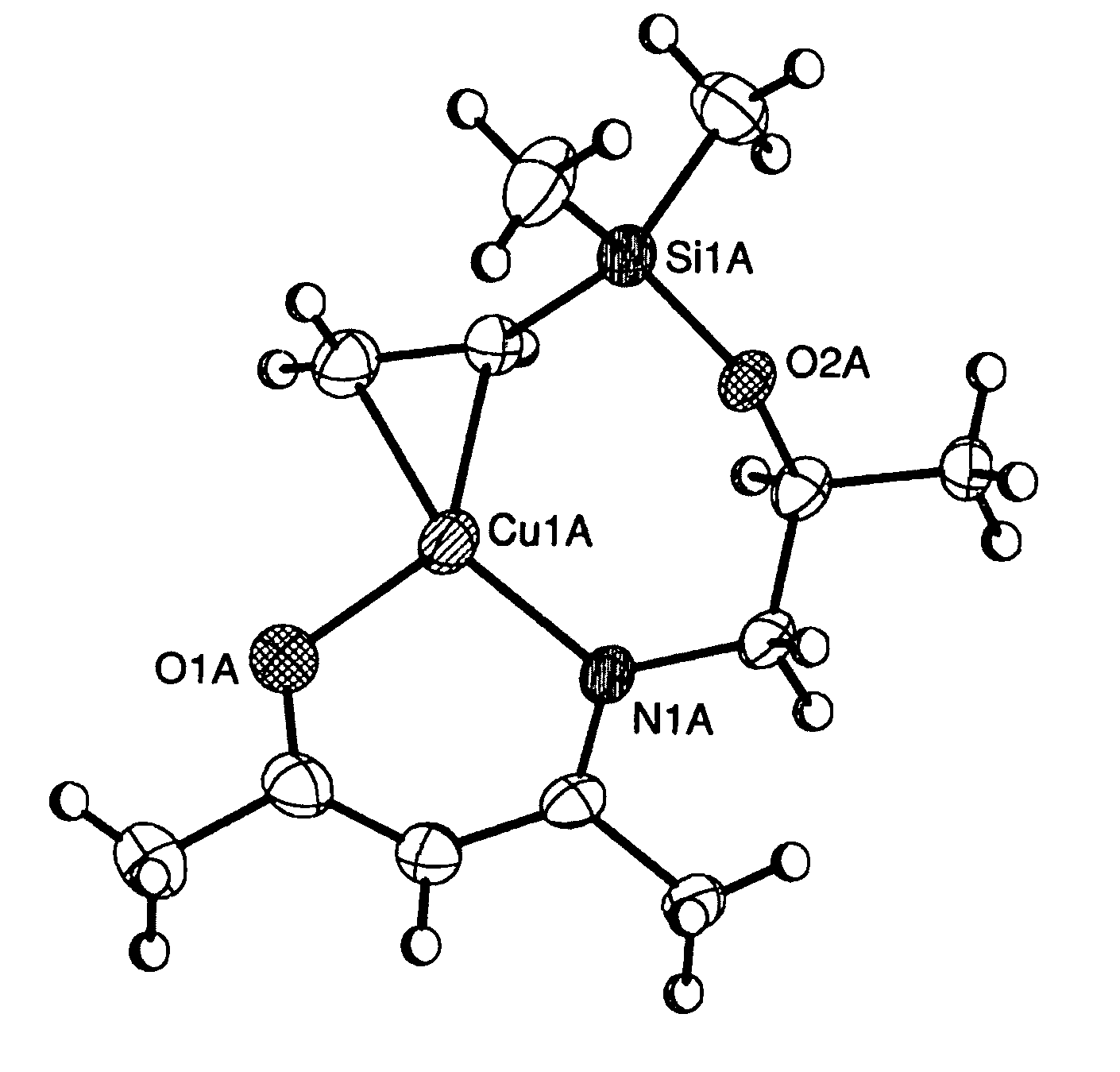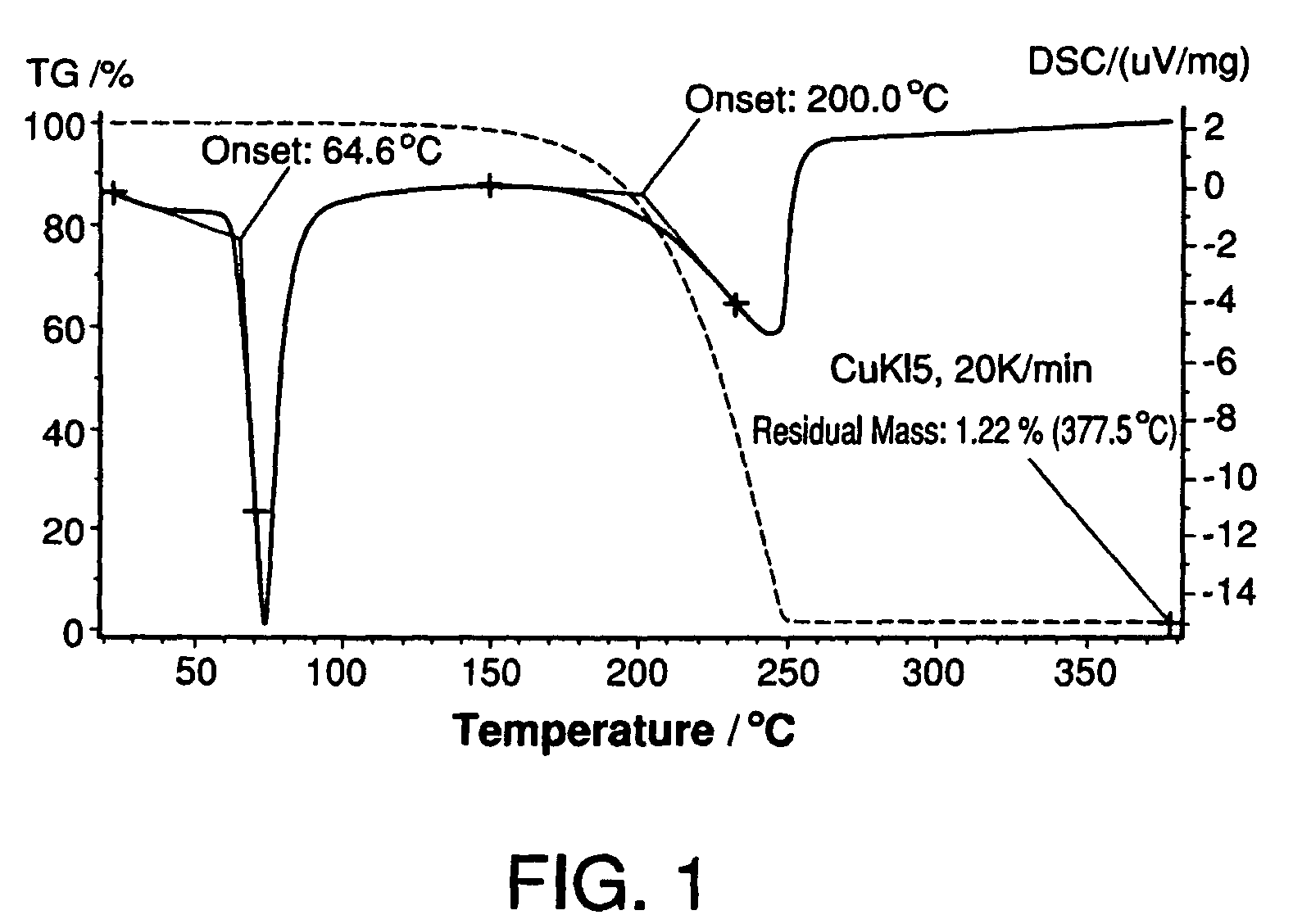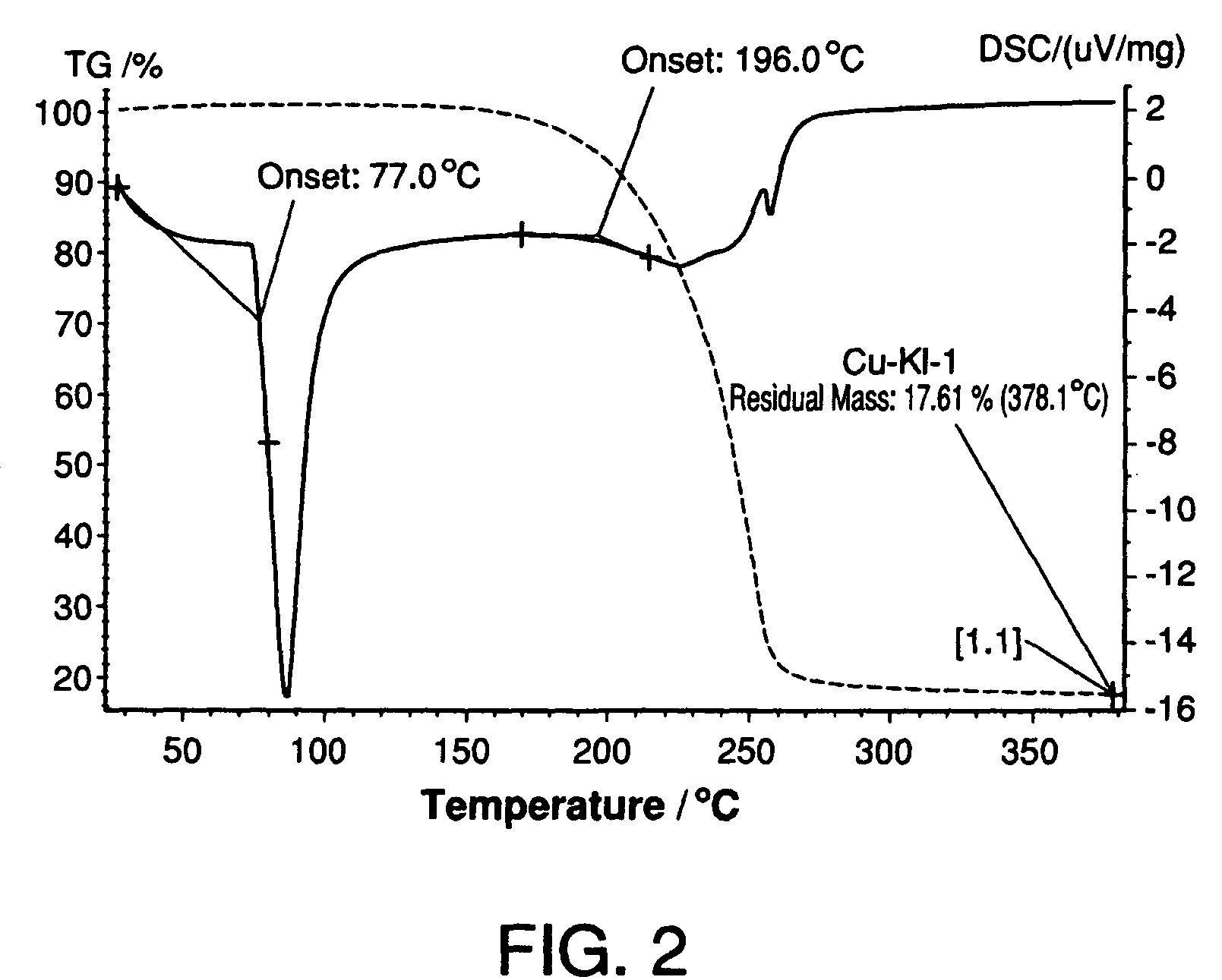Copper precursors for thin film deposition
a precursor and copper technology, applied in the field of copper precursors, can solve the problems of limited vertical sidewall coverage of line-of-sight techniques, problems such as the difficulty of tsv vias, and the type of chemistry may present problems
- Summary
- Abstract
- Description
- Claims
- Application Information
AI Technical Summary
Benefits of technology
Problems solved by technology
Method used
Image
Examples
example 1
Synthesis of Cu(MeC(O)CHC(NCH2CHMeOSiMe2 C2H3)Me) precursor
Step 1: Forming MeC(O)CHC(HNCH2CHMeOH)Me or Ketoimine Intermediate
[0078]150 g (2.0 moles 1-amino-2-propanol) was added to 200 g (2.0 moles) of 2,4-pentanedione stirred in 1.0 liter of hexane solvent containing 200 g of sodium sulfate drying agent for 1 hour. The hexane was then decanted off and 500 ml of tetrahydrofuran (THF) solvent added to dissolve all of the crude product. This solution was then decanted into a fresh flask containing 200 g of fresh sodium sulfate and stirred for 1 hour. The THF solution was then decanted off and stored in a freezer overnight to crystallize. The supernatant liquid was decanted off and the remaining solid pumped dry. The crude solid was then melted under vacuum to 130 C and volatiles pumped away to a liquid nitrogen cooled vacuum trap. Yield=197.5 g (63%), The GCMS results for the product showed it to be >99% pure and its mass spectra identified as that of the desired product showing a par...
example 2
CVD Deposition of a Copper Film Using the Cu(MeC(O)CHC(NCH2CHMeOSiMe2 C2H3)Me) Precursor
[0081]A copper film was deposited onto a titanium nitride (TiN) substrate using the Cu(MeC(O)CHC(NCH2CHMeOSiMe2 C2H3)Me) precursor in a hot wall CVD laboratory scale reactor using the conditions described in the following Table I and using formic acid as a reducing agent. A pure copper film of approximately 5 microns thick was grown, as determined by Secondary Ion Mass Spectrometry (SIMS) analysis, as shown in FIG. 6, which showed no detectable amounts of carbon, hydrogen, nitrogen, oxygen or silicon meaning that the copper film is >99.99 atomic % pure copper. Note that the depth profile was stopped before the bottom of the copper film was reached.
[0082]
TABLE ICVD copper process conditionsTiN wafer temperature ° C.250Copper Precursor source temperature120(° C.)CVD chamber pressure (Torr)2Copper precursor helium carrier gas flow25(sccm)Formic acid reagent flow (sccm)150Run time (minutes)30
example 3
CVD Deposition of a Copper Film Using the Cu(MeC(O)CHC(NCH2CHMeOSiMe2 C2H3)Me) Precursor
[0083]A copper film was deposited onto a patterned tantalum nitride (TaN) substrate using the Cu(MeC(O)CHC(NCH2CHMeOSiMe2 C2H3)Me) precursor in a hot wall CVD laboratory scale reactor using the conditions described in the following Table II and using formic acid as a reducing agent. The copper film was deposited as a conformal layer into a large scale trench feature and had dimensions typically found in TSV / 3-D packaging, as evidenced by FIGS. 7, 8, 9 and 10 which provide four Scanning Electron Microscope (SEM) images of the trench, top, bottom, and sidewall views, respectively, of the copper film.
[0084]
TABLE IICVD copper process conditionsTaN wafer temperature (° C.)225Copper Precursor source temperature120(° C.)CVD chamber pressure (Torr)5Copper precursor helium carrier gas flow100(sccm)Formic acid reagent flow (sccm)150Run time (minutes)60
PUM
| Property | Measurement | Unit |
|---|---|---|
| thickness | aaaaa | aaaaa |
| temperature | aaaaa | aaaaa |
| temperatures | aaaaa | aaaaa |
Abstract
Description
Claims
Application Information
 Login to View More
Login to View More - R&D
- Intellectual Property
- Life Sciences
- Materials
- Tech Scout
- Unparalleled Data Quality
- Higher Quality Content
- 60% Fewer Hallucinations
Browse by: Latest US Patents, China's latest patents, Technical Efficacy Thesaurus, Application Domain, Technology Topic, Popular Technical Reports.
© 2025 PatSnap. All rights reserved.Legal|Privacy policy|Modern Slavery Act Transparency Statement|Sitemap|About US| Contact US: help@patsnap.com



